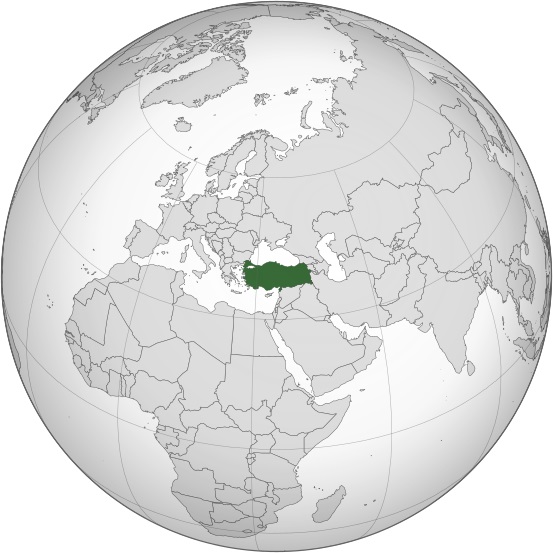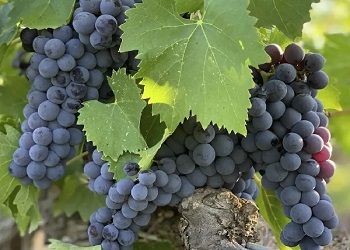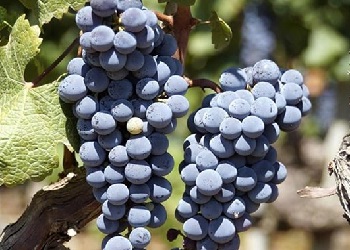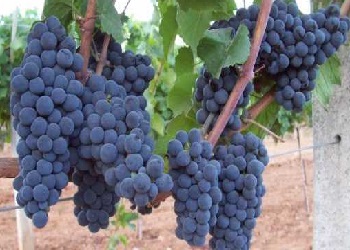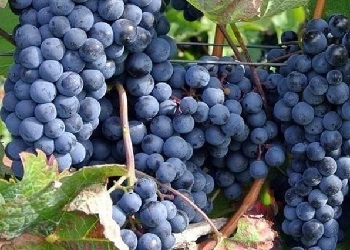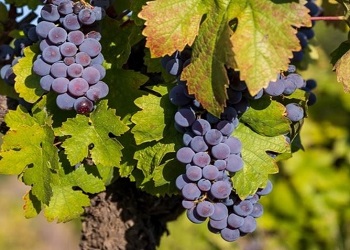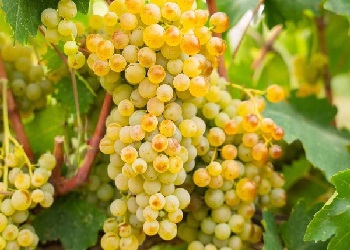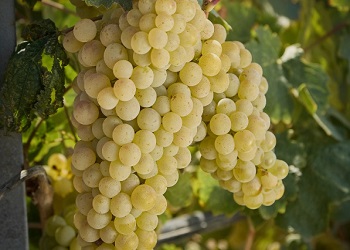Turkish Wine
Turkish wine has a long history, dating back nearly 7,000 years. The Caucasus region, where Armenia, Azerbaijan and Georgia are located, plays an important role in the history of wine. These regions and Turkey, are known to have been the earliest wine-producing regions in the world.
Turkey covers some of the largest vineyard area in the world with 450,000 hectares under vine (more than USA). It ranks number 6 in global grape production producing more than 4 million tons of grapes annually.
But, most of the grapes produced in Tyrkey are consumed as table grapes or raisins. Only 3% is used for winemaking, and only 30 of Turkey’s 1000 indigenous grape varieties are used to produce wine.
Turkish Red Wines
| Grape | Tons | |
|---|---|---|
| Öküzgözü | The Most Common | 12,000 |
| Boğazkere | Bold and Tannic | 9,000 |
| Kalecik Karası | Elegant and Fruity | 7,000 |
| Papazkarası | Historic and Versatile | 5,000 |
| Karasakız | The Bright and Elegant | 1,000 |
Turkish White Wines
| Grape | Tons | |
|---|---|---|
| Sultaniye | Fresh and Fruity | 14,000 |
| Narince | Elegant and Aromatic | 6,000 |
| Emir | Crisp and Mineral-Driven | 5,500 |
Turkish Grapes
Öküzgözü
Öküzgözü is Turkey’s most widely planted red grape variety. It is one of the oldest winemaking grapes in the world.
The name translates to "bull’s eye", referring to its large round berries.
Öküzgözü is primarily grown in Eastern and Central Anatolia, especially in the Elazığ and Malatya regions. These areas have a continental climate with hot summers and cold winters, and the vineyards are often planted at altitudes above 1,000 meters (3,380 feet). High altitude helps the grapes retain their acidity, making for well-balanced wines.
Wines made from Öküzgözü tend to be medium- to full-bodied, with bright acidity and soft tannins. The grape’s high acidity makes it a great candidate for both fresh, fruit-forward wines and more structured, oak-aged styles. Serious examples from old vines have impressive depth and textural complexity.
Because of its lively acidity, Öküzgözü is often blended with Boğazkere, another well-known Turkish variety. While Öküzgözü contributes freshness and fruitiness, Boğazkere adds tannic structure and depth, resulting in balanced, long-lived wines.
Öküzgözü is a great example of Turkey’s rich winemaking heritage, producing wines that are approachable yet capable of aging well.
Boğazkere
Boğazkere is one of Turkey’s most important and historic indigenous red wine grapes.
The name translates to "throat burner", a reference to its naturally high tannin structure and powerful character.
Boğazkere is primarily grown in southeastern Anatolia, with its heartland in the Diyarbakır region. The region's hot, dry summers and cold winters create an ideal environment for the grape, allowing it to develop intense flavors and structure.
Boğazkere produces wines that are full-bodied, tannic, and deeply structured. The grape has high tannins, moderate acidity, and excellent aging potential, making it ideal for barrel aging and blending.
Young Wines: Intense fruit, strong tannins, and lively acidity.
Aged Wines: Integrated tannins, complex spices, and earthy characteristics (can develop for 5-10+ years in oak and bottle).
Blends: Because of its bold tannic structure, Boğazkere is often blended with Öküzgözü, a softer, more fruit-forward grape. This combination balances the wine, making it more approachable while maintaining depth and complexity.
Boğazkere is a wine for those who enjoy bold, structured red wines similar to Cabernet Sauvignon or Tannat. While it can be intense when young, it rewards aging, developing into a refined, complex wine. It is a cornerstone of Turkish winemaking and represents the rich history and tradition of Anatolian viticulture.
Kalecik Karası
Kalecik Karası (black from Kalecik) is one of Turkey’s most important indigenous red wine grapes, known for producing elegant, aromatic, and fruit-forward wines. It is often compared to Gamay and Pinot Noir due to its light body, vibrant acidity, and silky tannins.
Kalecik Karası is primarily grown in Kalecik, a district near Ankara in Central Anatolia. The grape thrives in the region’s continental climate, with hot days and cool nights, which helps preserve acidity and develop complex flavors.
The grape is also cultivated in:
- Denizli (Aegean region)
- Cappadocia (high-altitude vineyards)
- Thrace & Marmara (cooler regions, producing fresher styles)
Wines made from Kalecik Karası are typically light bodied, with soft tannins and bright acidity, making them fresh and easy to drink.
Some producers age it in oak to add spice and depth, but most prefer to highlight its pure fruit expression.
Young & Fresh Style: Bright red fruit, floral notes, vibrant acidity (best enjoyed within a few years)
Barrel-Aged Style: Adds complexity with notes of vanilla, spice, and mild earthiness
Rosé Wines: Some producers use Kalecik Karası to make elegant and aromatic rosé wines, perfect for summer drinking
Kalecik Karası is a fantastic choice for those who enjoy elegant, fruit-driven red wines, similar to Pinot Noir or Gamay. It is one of Turkey’s most versatile and food-friendly grape varieties, offering a refreshing and aromatic drinking experience.
Papazkarası
Papazkarası is one of Turkey’s oldest and most intriguing indigenous red wine grapes. The name translates to "Priest’s Black", referencing to its deep color and long history in Anatolian winemaking. Known for its versatility, it can produce light and fruity reds, fuller-bodied structured wines, and even sparkling or rosé wines.
Papazkarası is primarily grown in Thrace, the European part of Turkey, particularly in the Kirklareli, Tekirdağ, and Edirne regions. This area has a mild Mediterranean climate, with cooling influences from the Black Sea and the Marmara Sea, helping the grapes maintain their acidity and balance.
Papazkarası wines can range from light and fruity to more structured and tannic, depending on vinification and aging.
Papazkarası’s natural acidity and smooth tannins make it a versatile grape, capable of producing easy-drinking reds or more complex, age-worthy wines.
Young & Fresh Style: Light-bodied, fruity, soft tannins (similar to Gamay or Pinot Noir).
Oak-Aged Style: Fuller-bodied, richer, with spice and earthy notes.
Rosé Wines: Fruity, fresh, and aromatic, with vibrant acidity.
Sparkling Wines: Some producers experiment with traditional method sparkling wines.
Papazkarası is an underappreciated yet highly versatile Turkish grape, offering everything from light and fruity reds to complex, aged wines. It is often compared to Pinot Noir or Barbera, thanks to its bright acidity and red fruit flavors. If you enjoy elegant, food-friendly reds, this is a great Turkish variety to explore.
Narince
Narince is one of Turkey’s most important indigenous white wine grapes, known for its delicate floral aromas, balanced acidity, and aging potential.
The name means "delicate" or "graceful" in Turkish, which reflects the elegant nature of the wines it produces.
Narince originates from Tokat, a province in Northern Anatolia, near the Black Sea. The region’s continental climate, with warm days and cool nights, helps the grape retain acidity and aromatic complexity.
In addition to Tokat, Narince is also cultivated in:
- Cappadocia (high-altitude vineyards, mineral-driven wines)
- Denizli & Aegean region (warmer, fruitier expressions)
- Thrace & Marmara (cooler climate, fresher styles)
Narince wines are typically medium-bodied, with bright acidity and a combination of floral, citrus, and mineral notes. It can be fresh and crisp when unoaked or develop complex, nutty flavors when aged in oak.
Like Chardonnay it is a flexible grape that can be made into a variety of styles from aromatic and steely when aged in stainless steel, to complex and creamy with flavors of vanilla, caramel, and toasted nuts when aged in oak.
Narince is unique among Turkish white grapes because it has good aging potential, allowing it to develop richer flavors over time.
Narince is often blended with Chardonnay or Emir for added texture and complexity.
Narince is a beautifully aromatic and food-friendly white grape, often compared to Pinot Grigio or Albariño for its floral elegance and crisp acidity. Whether enjoyed young and fresh or aged for complexity, it showcases the unique terroir of Anatolia and is a must-try for anyone interested in Turkish wines.
Emir
Emir is one of Turkey’s most distinctive indigenous white wine grapes, known for its crisp acidity, light body, and mineral character. The name "Emir" means "lord" or "ruler" in Turkish, reflecting its long-standing importance in Turkish winemaking.
Emir is almost exclusively grown in Cappadocia, a region in central Anatolia famous for its volcanic soils, high-altitude vineyards, and unique terroir. The region’s continental climate features hot days and cool nights, which help the grapes retain their fresh acidity and bright flavors.
Cappadocia's volcanic, tuff-rich soils contribute to Emir's signature minerality, making it a distinctive and terroir-driven wine.
Emir is typically light-bodied, with high acidity and delicate fruit flavors, making it a refreshing and easy-drinking wine.
Emir is almost always vinified in stainless steel to preserve its fresh, crisp character. Unlike Narince, it is rarely oak-aged, as its delicate flavors are best expressed in a pure, unoaked style.
It is sometimes found in blends, but the best Emir wines are single varietal.
Some producers use Emir to make traditional method sparkling wines, taking advantage of its bright acidity and fine bubbles.
Emir is one of Turkey’s most elegant and mineral-driven white grapes, comparable to Albariño or Chablis. It is a refreshing, terroir-driven wine, perfect for those who enjoy crisp, dry whites with pure fruit and bright acidity.
Sultaniye
Sultaniye grapes are consumed as table grapes and raisins, but also used in winemaking.
Sultaniye wines are dry and semi-dry, light-bodied wines. Grapes used for winemaking are mainly grown at Denizli and Manisa in the Aegean Region.
The Semillon and Sultaniye wines from the Marmara Region of Turkey attract attention not only in the local market but also in international markets.
Sultaniye is one of Turkey’s most widely grown white wine grapes, known for its fresh, fruity, and easy-drinking wines. It is primarily used for table grapes and raisins, but it also produces light, crisp white wines that are perfect for warm-weather drinking.
Sultaniye is mainly cultivated in western Turkey, particularly in the Denizli and Manisa regions of the Aegean. The region’s Mediterranean climate (hot, dry summers and mild winters) helps develop the grape’s natural sweetness and fruity aromas.
Wines made from Sultaniye are typically light-bodied, with bright acidity and fresh fruit flavors. They are often made in a dry or off-dry style and rarely aged in oak to preserve their pure, fruity character.
Sultaniye wines are known for being refreshing, easy to drink, and best enjoyed young.
Young & Fresh Style: Crisp acidity, citrus and floral notes (best consumed within 1–2 years).
Off-Dry Style: Slightly sweet with tropical fruit flavors (similar to a light Riesling or Moscato).
Blended Wines: Sometimes blended with Narince or Chardonnay for more complexity.
Sultaniye is a refreshing and easygoing white grape, producing wines that are light, fruity, and perfect for summer drinking. If you enjoy Sauvignon Blanc, Pinot Grigio, or Albariño, you will likely appreciate Sultaniye wines.
Turkish Wine Regions
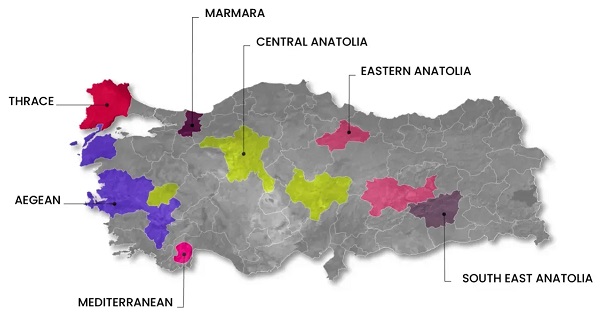
| Region | Grapes |
|---|---|
| Thrace | Reds: Papaz Karasi Cabernet Franc Cabernet Sauvignon Whites: Narince Chardonnay Sauvignon Blanc |
| Marmara | Reds: Cabernet Sauvignon Merlot Syrah Papaz Karası Whites: Chardonnay Sauvignon Blanc Yapıncak |
| Aegean | Reds: Cabernet Sauvignon Syrah Kalecik Karası Whites: Chardonnay Sultaniye |
| Central Anatoila | Reds: Kalecik Karası Boğazkere Cabernet Sauvignon Whites: Chardonnay Emir Narince Sultaniye Sauvignon Blanc |
| Mediterranean | Reds: Acıkara Syrah Cabernet Sauvignon Fersun Whites: Chardonnay Sauvignon Blanc |
| Eastern Anatolia | Reds: Öküzgözü Boğazkere Syrah Cabernet Sauvignon Whites: Chardonnay Sauvignon Blanc Emir Narince |
| South East Anatolia | Reds: Cabernet Sauvignon Merlot Syrah Boğazkere Öküzgözü Kalecik Karası Whites: Chardonnay Sauvignon Blanc Narince Sultaniye |
